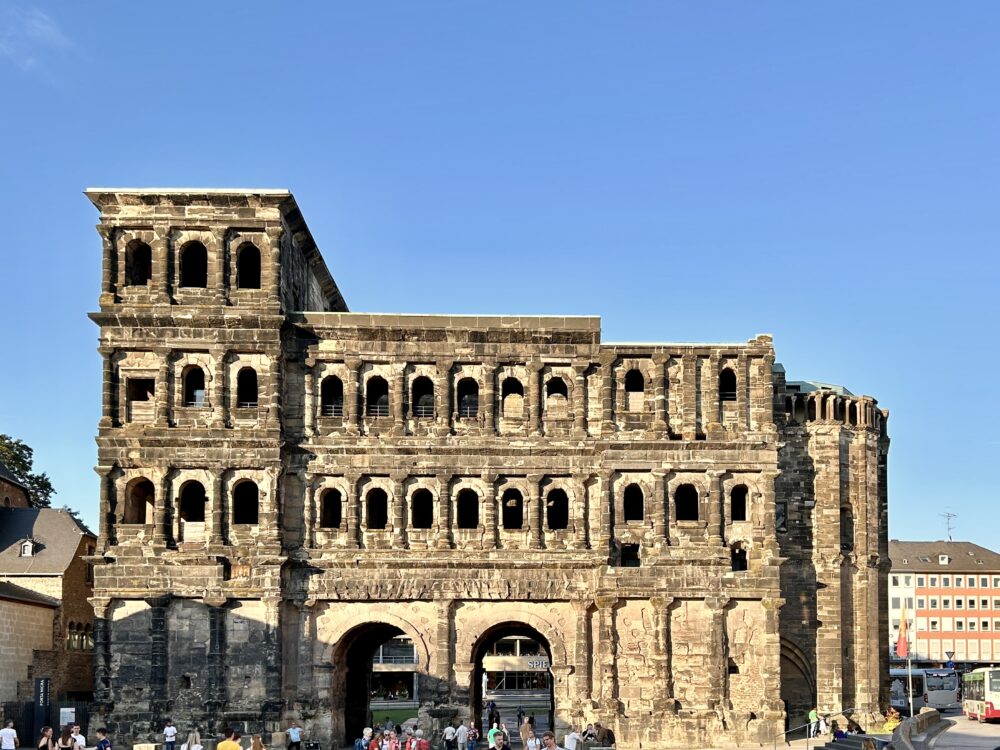The Porta Nigra, or “Black Gate,” stands as a testament to the grandeur of Roman architecture in Trier, Germany’s oldest city. Constructed around 170 CE, this imposing structure is the best-preserved Roman city gate north of the Alps and a UNESCO World Heritage Site.
Architectural Marvel
The Porta Nigra was built using approximately 7,200 blocks of grey sandstone, each weighing up to six tons. The gate’s design features two four-storied towers, which project as near semi-circles on the outer side, connected by a central section. The structure’s name, “Porta Nigra,” originated in the Middle Ages due to the darkened colour of its stone, a result of centuries of weathering.
In Roman times, the Porta Nigra would have been an impressive sight, with its massive stone blocks and intricate carvings. The gate served as the northern entrance to the Roman city of Augusta Treverorum, now known as Trier. It was part of a larger system of city gates that controlled access to the city and provided defence against potential invaders.
Historical Usage
During the Roman era, the Porta Nigra was not only a defensive structure but also a symbol of the city’s importance and prosperity. Trier, founded in the late 1st century BC, was a major center of Roman administration and trade, often referred to as the “Rome of the North”. The gate would have been a bustling hub of activity, with merchants, soldiers, and travellers passing through its arches.
After the fall of the Roman Empire, the Porta Nigra continued to play a significant role in the city’s history. In the Middle Ages, it was converted into a church by the hermit monk Simeon, who lived there for seven years. This adaptation helped preserve the structure when other Roman gates were dismantled for their stone.
Other Roman Remains in Trier
Trier is renowned for its wealth of Roman ruins, reflecting its status as a key Roman city. Some of the notable remains include:
- The Aula Palatina: Also known as the Basilica of Constantine, this large Roman palace hall is one of the best-preserved Roman buildings in Trier.
- The Roman Baths: Trier boasts three sets of Roman baths, with the Imperial Baths being the most famous. These baths were a center of social and recreational activity in Roman times.
- The Roman Bridge: Still in use today, this bridge over the Moselle River dates back to the 2nd century and is one of the oldest bridges in Germany.
- The Trier Amphitheater: Built in the 2nd century, this amphitheater could accommodate up to 20,000 spectators and was used for gladiatorial games and public spectacles.
The Porta Nigra and all these buildings are a remarkable example of Roman engineering and architectural prowess. They offer a glimpse into the city’s illustrious past as a major Roman hub.
#PortaNigra #TrierHistory #RomanArchitecture #AncientMonuments #HistoricGermany













